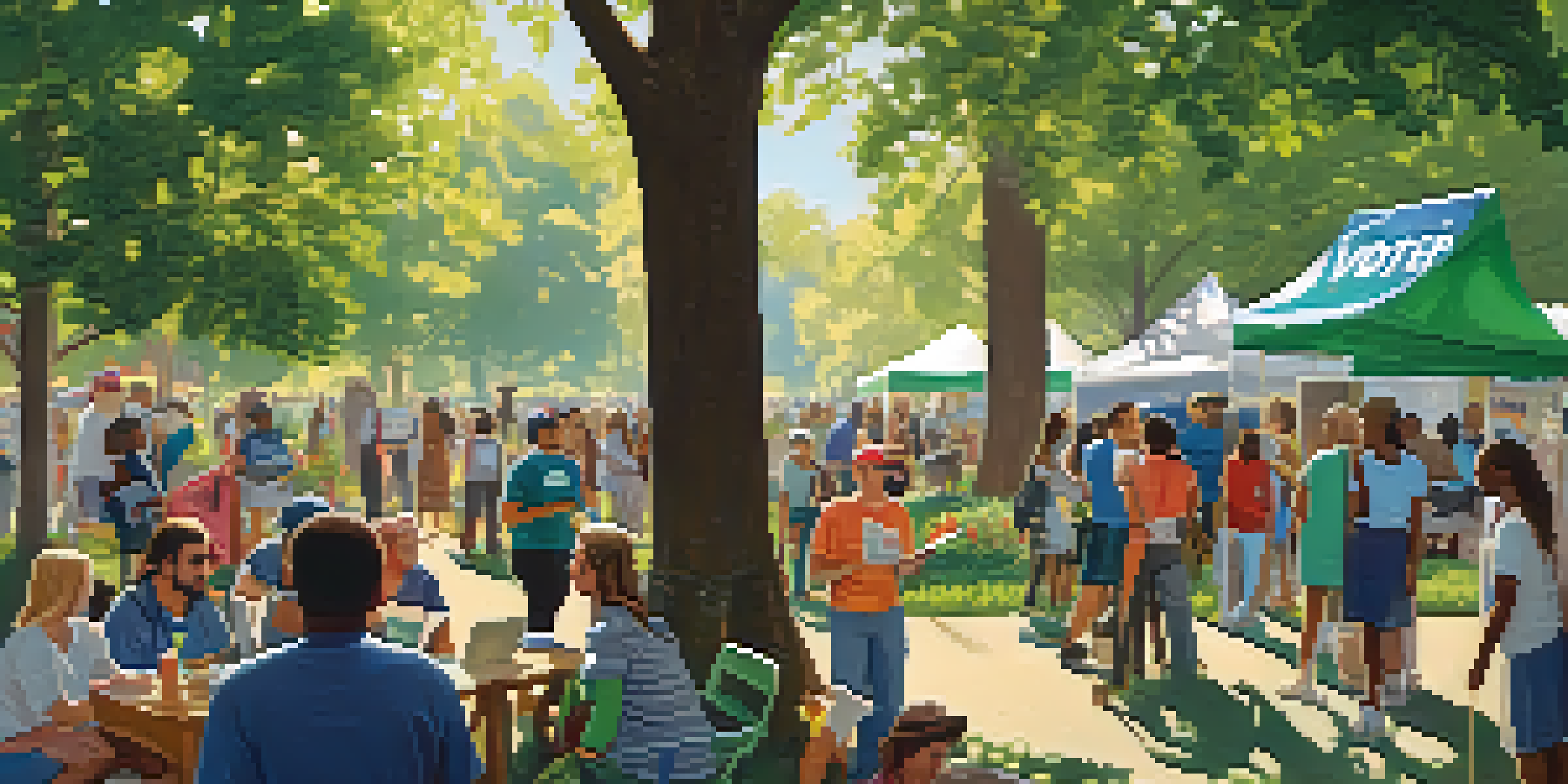Voter Turnout Trends in Raleigh: What the Data Shows

Understanding Voter Turnout: A Key to Democracy
Voter turnout is a crucial indicator of a healthy democracy. It reflects the engagement and interest of citizens in the electoral process. When more people vote, it not only amplifies diverse voices but also ensures that elected officials truly represent the population's will.
Historical Voter Turnout Trends in Raleigh
Looking back at past elections, Raleigh has seen varied voter turnout rates. For instance, the 2016 presidential election boasted a turnout of over 70%, while midterm elections typically attract fewer voters. Understanding these historical patterns helps us identify what drives engagement in different types of elections.
Voter Turnout Reflects Democracy
Higher voter turnout indicates a more engaged citizenry and ensures elected officials represent the population's will.
Factors Influencing Voter Turnout in Raleigh
Several factors impact voter turnout, including population demographics, socioeconomic status, and education levels. In Raleigh, a growing population and diverse community play significant roles. Local initiatives, such as voter registration drives and educational campaigns, also help boost participation rates.
The Role of Technology in Voter Engagement
In recent years, technology has transformed how voters engage with the electoral process. Online registration and social media campaigns make it easier to reach potential voters. Additionally, mobile apps can provide information on polling locations and ballots, further encouraging participation.
Technology Enhances Voter Engagement
Modern tools like online registration and social media campaigns make it easier for voters to participate in elections.
Analyzing Recent Election Data in Raleigh
The most recent elections have shown interesting trends in voter turnout. For example, the 2020 presidential election saw a significant increase in participation compared to previous years. Data indicates that younger voters, in particular, played a vital role in this surge, highlighting the importance of engaging this demographic.
Barriers to Voting in Raleigh
Despite the positive trends, some barriers still hinder voter turnout. Issues like transportation, lack of awareness about voting rights, and confusion over registration processes can discourage potential voters. It's essential to address these challenges to ensure that everyone has the opportunity to participate in democracy.
Community Efforts Boost Participation
Local initiatives, such as workshops and transportation assistance, play a crucial role in increasing voter turnout in Raleigh.
Community Initiatives to Boost Voter Turnout
Local organizations in Raleigh are actively working to increase voter turnout through various initiatives. These efforts include hosting informational workshops, providing transportation to polling places, and creating buddy systems to encourage friends to vote together. Such community-driven approaches can make a significant difference in turnout rates.
Looking Ahead: Future Trends in Voter Turnout
As Raleigh continues to grow, understanding future voter turnout trends becomes vital for local governance. With changes in demographics and technology, we can anticipate shifts in participation rates. Ongoing analysis and community engagement will be key to fostering an inclusive electoral process for all residents.